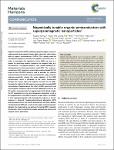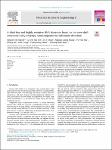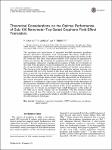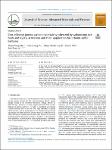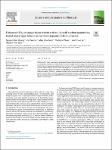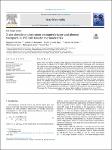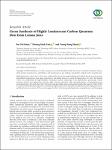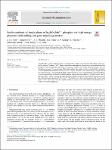Search
Author
- Quan-Hoang Vuong (19)
- Vuong QH (12)
- Nguyen Van Hieu (10)
- Viet-Thanh Pham (10)
- next >
Subject
- Vietnam (4)
- Affective computing (3)
- Artificial Intelligence (3)
- Electrospinning (3)
- next >
Date issued
- 2020 - 2022 (132)
- 2010 - 2019 (19)
- 2002 - 2009 (1)
Search Results
A core-shell cerium oxide nanorod@polypyrrole (CeO2-NR@Ppy) nanocomposite-based electrochemical DNA biosensor was studied for Salmonella detection. The core-shell CeO2-NR@Ppy nanocomposite was prepared by in situ chemical oxidative polymerization of pyrrole monomer on CeO2-NRs, which provided a suitable platform for electrochemical DNA biosensor fabrication. The immobilization of ss-DNA sequences onto nanocompositecoated microelectrode was performed via covalent attachment method. DNA biosensor electrochemical responses were studied by cyclic voltammetry and electrochemical impedance spectroscopy with [Fe (CN)6] 3−/4− as redox probe. Under optimal conditions, DNA biosensor response showed good linearity in the range of 0.01–0.4 nM with sensitivity of 593.7 Ω·nM−1·cm−2. The low limit... |
We argue that neutrino mass and dark matter can arise from an approximate B − L symmetry. This idea can be realized in a minimal setup of the flipped 3-3-1 model, which discriminates lepton families while keeping universal quark families and uses only two scalar triplets in order for symmetry breaking and mass generation. This proposal contains naturally an approximate non-Abelian B − L symmetry which consequently leads to an approximate matter parity. The approximate symmetries produce small neutrino masses in terms of type II and III seesaws and may make dark matter long lived. Additionally, dark matter candidate is either unified with the Higgs doublet by gauge symmetry or acted as an inert multiplet. The Peccei-Quinn symmetry is discussed. The gauge and scalar sectors are exactl... |

